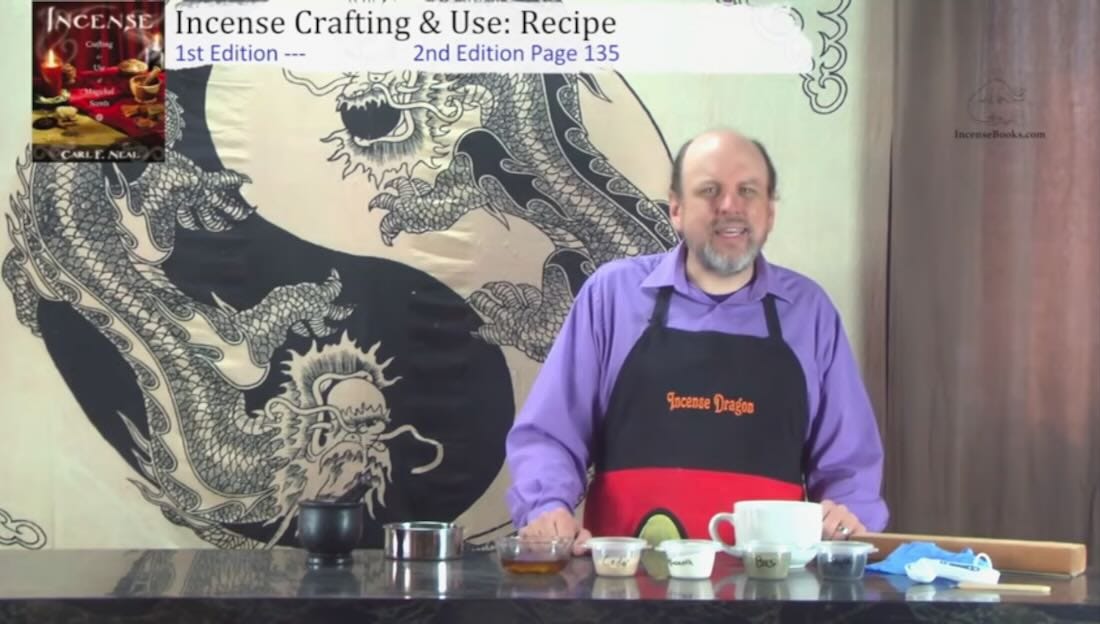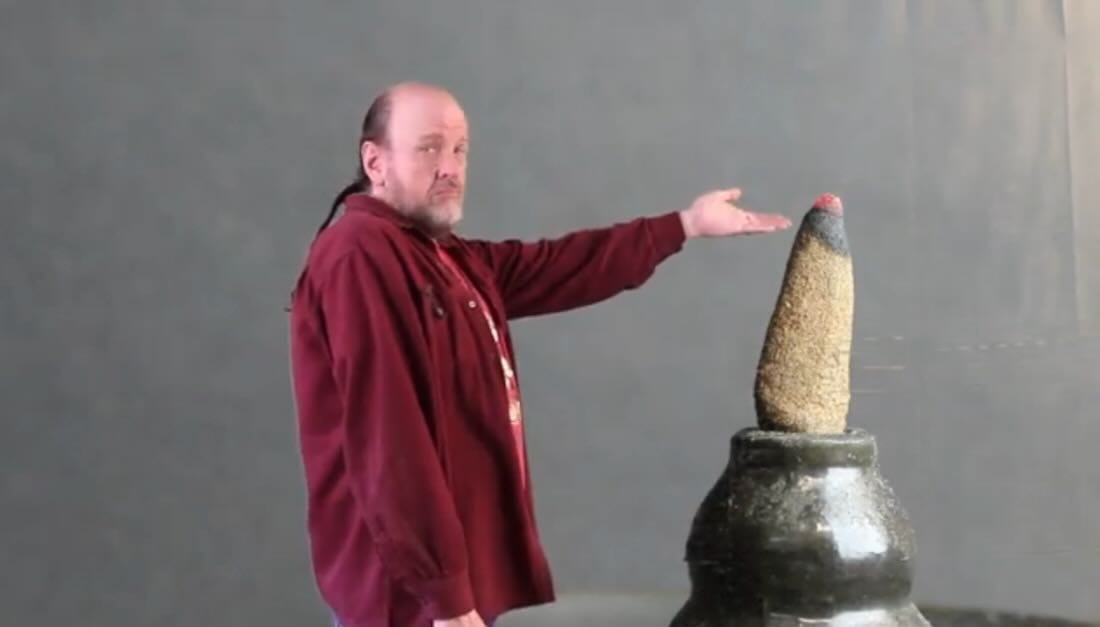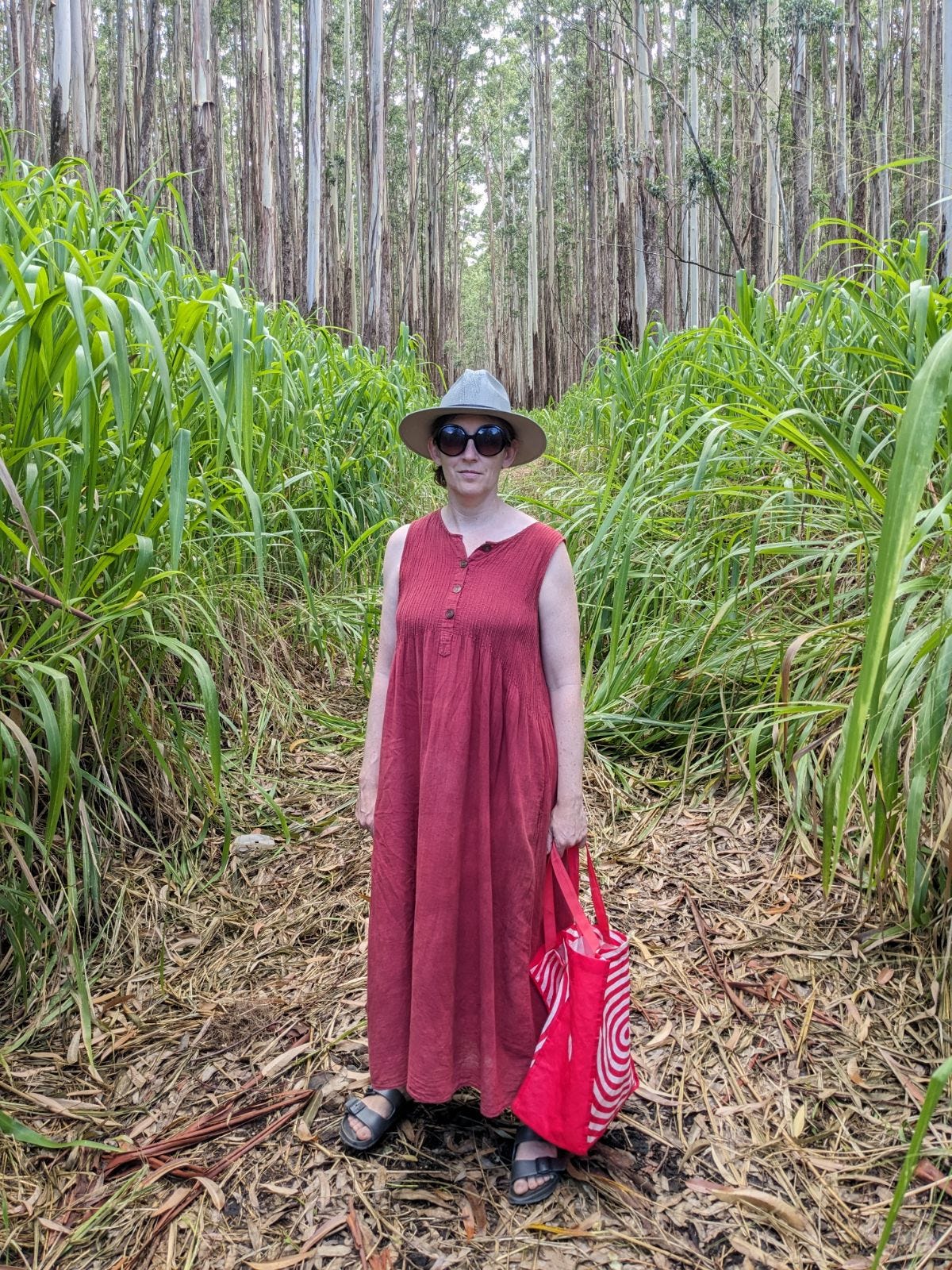I say I don’t watch TV anymore, but that’s a lie. I watch YouTube. Daily. For the most part, it’s my gym and yoga studio. Several times per week, I practice yoga with Adriene or Cole, breathe with Sandy, Kelaila, or Om Shanti Breathwork, and throw around kettlebells with whatever channel accommodates my unmotivated perimenopausal Auntie Bod (MyBodyFits is a current favorite). I’ve also used it to vet the merits of various unregulated gas station intoxicants. There are…a LOT…of videos taken by various heads (usually young, white, and male) detailing the highs and lows of every nootropic I’ve tried in my (vain) attempts to replace cannabis.
But more than anything, I’ve found YouTube a great place to learn how to do something new. When I was first googling everything I could about incense, it didn’t take me long to find Incense Dragon. Right away, I was charmed by Carl Neal’s no-nonsense, unpretentious, and deeply informative videos.
Carl is definitely going for the lo-fi Bob Ross vibe, and I LOVE IT. His videos are a cleansing antidote to the parade of pretty privilege in the workout and breathwork channels I follow. (I know, I shouldn’t hate the beautiful…especially Cole, whom I’ve met and is lovely both inside and out, goddamn her. SORRY COLE!) With his monogrammed Mickey Mouse apron and balding man ponytail, Carl is the pagan uncle I never had. His videos are refreshingly free of attempts at fancy camerawork and overtly relentless self promotion. (Granted, he does run a business selling incense-making tools, so most of his videos demonstrate how to use them.) In one video, he refrains from mentioning his own excellent books in his list of recommended reading, saying that doing so would be a conflict of interest. That kind of integrity is the way to my heart! Not only that, but his videos are clear, easy to understand, and to the point. In 20 minutes or less, I’ve managed to learn how to roll cones, figure out gum binders, and get incense that won’t burn to burn (my favorite episode by far).
I really fell in love with Carl’s work when I read his books. While Incense: Crafting & Use of Magickal Scents and Incense Magick come from a specifically pagan perspective, anyone new to incense would benefit from reading them. I have had a great beginner’s education from reading both of his books and those listed in his bibliographies. The Crafting book has been my recipe bible as I’ve taught myself how to roll cones and identify individual botanicals by scent. I don’t know if I’ll ever use incense to work magick ( like Fox Mulder, “I Want to Believe,” which doesn’t necessarily mean that I do believe), but with Carl’s books, I have the tools to do that too, should I choose.
Most importantly, I love Carl’s practical and open-minded approach to incense ingredients. Though he encourages the use of incense made from natural ingredients instead of fragrance oils, he doesn’t get snotty about it—he even admits there’s a time and place for the cheap fake stuff. However, with Crafting, you need never buy cheap fragrance oil incense ever again, as Carl includes recipes for “grocery store incense”: natural incense made from common ingredients you can buy at big box grocery or pet stores. I adore this populist approach, as after studying incense for only a few months, I can already tell that the incense nerd marketplace can be similar to those for fine wines and high fashion. I’ve been tempted by mysterious, sexy incense makers who promise secret drops of limited edition, handmade incenses using gorgeous, rare, expensive ingredients. Not only that, but many of these ingredients (especially sandalwood and frankincense) risk extinction in the wild from being desired so much. For an item that has been universally used to enhance spiritual connection, incense has also had a shadow side of conspicuous consumption. I’m still trying to wrap my head around it…and avoid spending all of my money on incense!
Which is why I will continue to be a student of Carl’s, who likes to harvest his own incense materials whenever possible. As I work my way through the recipes in Crafting, I hope to gain facility in using Hawaiin-grown ingredients as analogues for the resins and woods he uses. I’m not there yet, but there’s hope, as there are a ton of common incense aromatics—cinnamon, eucalyptus, lavender, lemongrass, and vetiver, for example—that grow in Hawaii. I also hope to experiment: can I use invasive Himalayan ginger instead of culinary ginger? Or what about substituting pohinahina, a common native plant, for white sage?
I’m excited to begin, and with Carl’s videos and books as my references, I feel like I have a friendly uncle at my side cheering me on and offering wise advice. When I found out a few months ago that Carl’s incense workshop was destroyed in a fire, I went ahead and bought one of his incense tool sets. Sure, I could have purchased most of that stuff individually at thrift and craft stores, as Carl suggests in his books. But incense has brought me so much peace and joy, that I wanted to help the guy who made that world accessible to me.
So bright blessings, Carl. Thanks for sharing your love of this magickal art.




